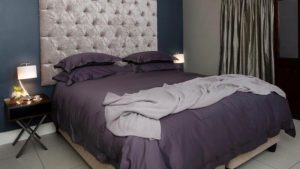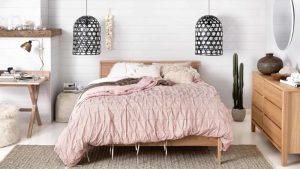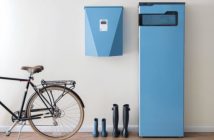Sleep plays such an essential role in our overall well-being, which is why it’s important to invest in the very best you can afford to ensure your bed is a sleep sanctuary. While investing in a good quality mattress is essential to a good night’s sleep, having a good quality duvet inner is also crucial to ensure you sleep in comfort. But, how do you go about selecting the correct duvet inner for yourself? We’ve put together this easy buyer’s guide to help you make an informed choice and demystify the whole process.
Know your wants and needs

Before you start looking for a duvet inner for your bed, it’s important to ask yourself a few questions first. Namely, what size is your bed or mattress, does your current duvet inner drape comfortably over your body, and does your duvet feel heavy or light, and which do you prefer? You should also consider whether you have any special requirements. Do you have any allergies or do you, or your partner, have a higher than average body heat while sleeping? Lastly, work out your budget for a new duvet inner and buy the best duvet you can afford to ensure your duvet contributes to a good night’s sleep.
A good duvet inner should last you between 15 – 30 years, so it’s important to invest in the best one you can afford to get many years of use out of it.
Natural versus synthetic filled duvet inners

Your answers to the above questions will start you off on an informed search for the correct duvet inner. You’ll need to narrow down the options into two broad categories; namely natural filled duvet inners and man-made synthetic filled duvet inners.
A natural fill is any substance that is organic (such as down, feathers, wool, silk, alpaca, cotton) while a synthetic/man-made fill is any substance that is non-organic or has been vigorously processed (such as hollowfibre, micro-fibre, acrylic and bamboo).
The biggest difference between the two categories is price. Usually price is an indicator of quality and, unfortunately, with duvet inners you get what you pay for. Natural filled duvet inners tend to be more expensive than man-made/synthetic filled duvets. These different categories of duvet fillers also perform vastly differently and while man-made/synthetic filled duvets cleverly mimic natural filled duvets, for some it will be worth spending a bit more for the performance of a naturally-filled duvet inner. Deciding between the two comes down to your set of requirements in a duvet inner.
Find the best prices on bedding and duvet inners online with PriceCheck now:
Weighing up your options

It’s important to think about how light you want your duvet to be. For some sleeping with a lightweight duvet is incredibly important as they don’t like to be bogged down by a heavy duvet.
Natural filled duvet inners are lightweight, warm (despite their light weight) and provide excellent temperature control. They also have moisture wicking properties– water vapour escapes from body during sleep and is wicked away, ensuring a comfortable (non-sweaty) sleep.
Natural filled duvet inners are also anti-bacterial and anti-microbial, making them ideal for those worried about bacteria harbouring in the bed. While natural-filled duvet inners are a great choice for anyone who can afford it, it’s also important to note that they require careful care and cleaning to prolong their lifespan.
Man-made/synthetic filled duvet inners are often also non-allergenic and anti-dust mite, making them ideal for those with allergies. While synthetic filled duvet inners are less expensive, they can be heavier than natural fillings and they aren’t as effective at temperature control. They can, however, be easily laundered and are not as difficult to care for.
Always make sure to check the cleaning and washing instructions of the duvet inner before purchasing and choose a duvet inner that you can be sure you will have the time and funds to care for properly.
Consider the tog rating

When choosing a duvet inner it is also important to consider the ‘tog rating’ of the product. The tog rating is the duvet’s ability to trap air, which is what keeps you warm (this is called thermal resistance). Therefore, a high tog rating will result in a duvet which is warmer.
A guideline for a winter duvet inner would be a tog rating of between 7 and 13 tog, while a summer duvet inner would be 3 to 4.5 tog.
Look at the construction

Looking at the construction of the inner is also important. Is the filling in ‘squares’ or in long channels?
Squares, often called the ‘baffle box’ design, ensure that the fill does not move and clump, and the heat retention is evenly distributed. Also, make sure you look at the stitching and edges. The stitching should be secure and neat with no fill poking out.
Also, check what the casing is made from. A down/feather duvet inner must have a down-proof casing, and all natural-fill duvet inners should have a casing made from 100% cotton.
Sustainability

If the inner has a feather/down fill, check that it has a certification by the International Down and Feather Bureau and whether it has a Featherite certification. This guarantees that the down and feathers have been ethically sourced (from ducks and geese killed for food). The Featherite certification is that the fill has been cleaned to a specific quality standard, rendering it hypo-allergenic and dust mite free.
Find the best prices on bedding and duvet inners online with PriceCheck now:




